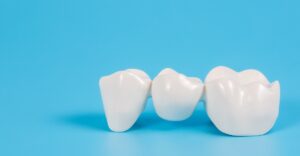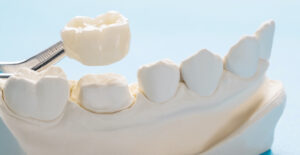The core of the tooth is an area of soft tissue called the pulp, which carries the tooth’s nerves, veins, arteries and lymph vessels. Root canals are usually very small, narrow channels that branch off from the pulp chamber above down to the tip of the root. Teeth have a varying number of canals in them based on which category(i.e incisors, canines, molars etc) they belong to.
Root Canal and Tooth pain
Teeth may become symptomatic and need root canal treatment for a number of reasons. Some of them are deep decay reaching the core pulp tissue, trauma leading to fracture etc. Damaged pulp can cause increased blood flow within the tooth, and the build-up of pressure can cause acute symptoms like pain on biting down, chewing on it and applying hot or cold foods and drinks.
Root Canal Therapy
Once the decay or fracture has affected the pulp, the tooth needs root canal treatment. Without treatment, the infection may spread into the surrounding bone, and the tooth may become even more painful with time. The only alternative to getting a root canal done is usually extraction
of the tooth, which can cause neighboring and opposing teeth to shift, resulting in an altered bite. Though an extraction seems to be more economical upfront, the space left behind will require an implant or a bridge, which can be more expensive than root canal therapy. No manmade replacement is as good as saving your original tooth.
Root Canal Procedure
Root canal therapy is a procedure done to save the tooth by cleaning out the diseased pulp and restoring a healthy environment within. The canal is filled with gutta percha, a rubberlike material, to seal the tooth and prevent recontamination. The tooth is then restored to its original form with a post and core and/or a gold or porcelain crown. This enables patients to keep the original tooth.
Once it has been determined that a particular tooth needs root canal treatment, your dentist may choose to do it themselves or refer you to an endodontist (a root canal specialist). Treatment usually involves one appointment, but may run into as many as three, depending on the
complexity.
First, you will be given a local anesthetic to numb the area. A rubber sheet is then placed around the tooth to isolate it. Next, a small opening is prepared into the pulp chamber and the root canal, is cleaned of all diseased pulp and shaped in a uniformly tapering fashion. Depending on the condition of the tooth, the crown may then be sealed temporarily to protect against recontamination or the dentist may continue the treatment and fill the canals at the same appointment.
If a temporary filling has been placed in the tooth, on the next visit it is removed and the pulp chamber and canal(s) are cleaned once again, and then filled with rubberlike gutta percha. If there isn’t enough tooth structure to support a filling, a metal post may be inserted into the canal to provide a substructure for the filling to hold onto. The tooth is usually built-up with a strong core material. Finally, a gold or porcelain crown is placed over the tooth to prevent fracture in the future and improve its appearance.







